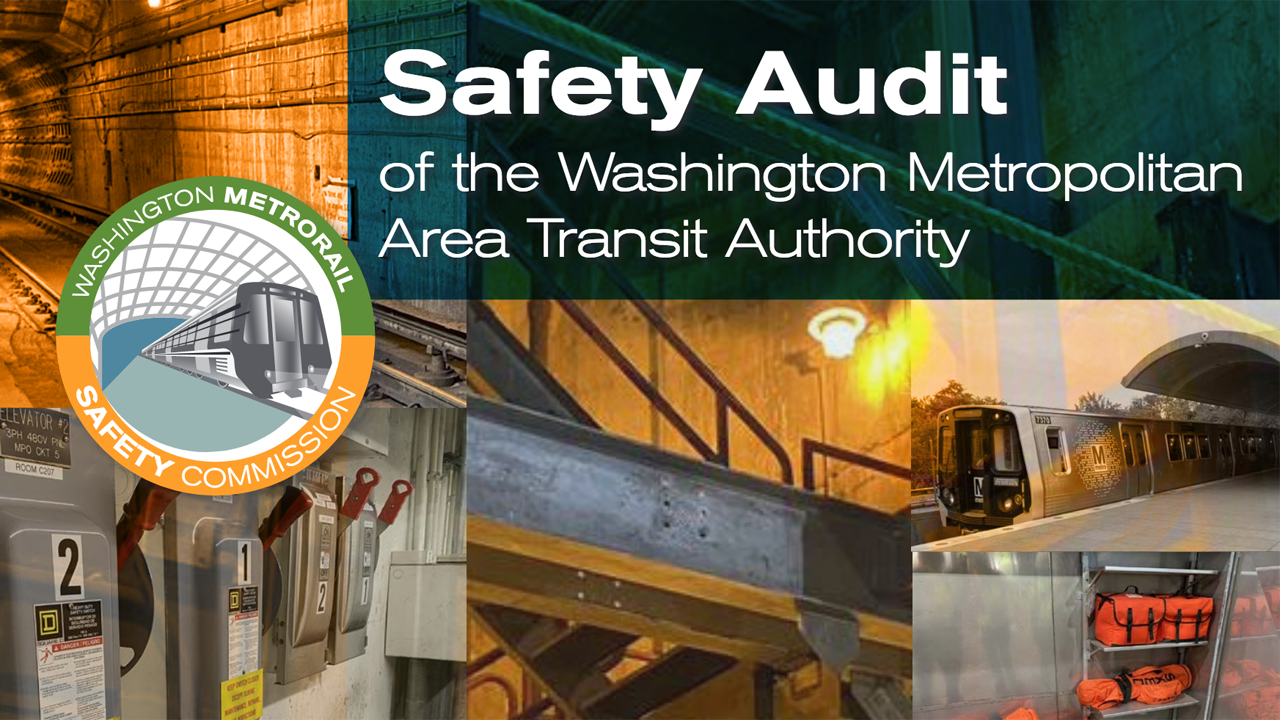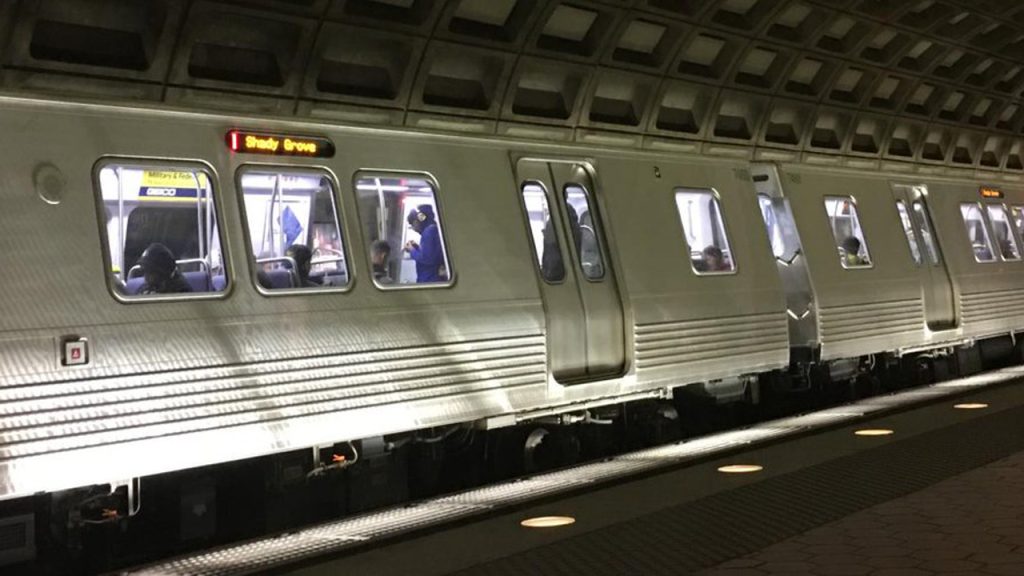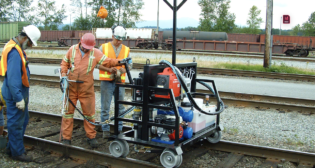
More Emergency Management Work Ahead for WMATA, Audit Finds
Written by Marybeth Luczak, Executive Editor
The Washington Metrorail Safety Commission (WMSC) on Feb. 22 released an audit report of the Washington Metropolitan Area Transit Authority’s (WMATA) emergency management and fire and life safety programs that it said demonstrates “some improvements since the 2015 smoke accident near L’Enfant Plaza Station*, including markedly improved training and system familiarization for local first responders”; however, more work is required.
Following in-depth interviews, site visits, and document and data reviews conducted in 2021, the independent safety commission also found areas where WMATA “is not meeting its own written requirements; does not have adequate procedures, processes or requirements; or does not have adequate training, coordination and supervision.” As a result, the WMSC audit (download below) outlined 14 findings requiring the transit agency to develop corrective action plans (CAPs) and five recommendations that must be addressed.
Here are highlights of the 14 findings that require CAPs:
- WMATA “does not consistently follow the incident command system (ICS) structure, and has procedures that do not comply with National Incident Management System (NIMS)/ICS requirements such as the use of plain language.” Additionally, “training requirements are insufficient to prepare personnel to respond to and/or manage emergencies within the NIMS/ICS framework. These deficiencies have contributed to ineffective and improper emergency response and emergency management.”
- The transit agency “created and implemented an ‘Incident Management Official’ (IMO) position without documented training, responsibilities, communication or coordination, and without adequate staffing to ensure other emergency management and preparedness activities were not interrupted.”
- Metro Transit Police Department personnel “routinely enter the roadway [track areas] despite not having RWP [Roadway Worker Protection] qualifications” that WMATA rules and procedures require, thereby “exposing themselves and others to the risk of serious injury or death.”
- Metro Transit Police Department general orders “do not reflect current operational realities and procedures, and areas for improvement from prior events are not effectively communicated to frontline MTPD personnel.”
- WMATA’s “calls to public safety answering points (911 call centers) are inconsistent, incomplete and contribute to delayed or ineffective emergency response.”
- The transit agency “has not clearly defined and communicated the authority and duties of its Fire Marshal and any other fire prevention roles or positions, and does not have effective continuity plans in the event the Fire Marshal is unavailable.”
- WMATA does not ensure that experts in fire and life safety are included in and have a documented role in its project development, planning, review and approvals, “which contributes to hazards being introduced into the [WMATA] system or hazards being allowed to continue to exist without adequate mitigation.”
- “There is inadequate coordination among organizational units charged with developing, inspecting and maintaining critical fire and life safety assets, and there is no unified process to identify, prioritize and address fire and life safety risks.”
- WMATA “does not routinely conduct hazard assessments to evaluate and prioritize fire and life safety and emergency management issues.” Additionally, it “has not established a fire and life safety and emergency management hazard identification, tracking and open item resolution process for prioritizing and implementing safety improvements.”
- “Emergency equipment in station medical cabinets is expired and covered in dirt. There is no inspection procedure or responsible party assigned to inspect and maintain this safety equipment.”
- WMATA “does not conduct systematic underground inspections to ensure safe egress and fire and life safety response, and has set minimum tunnel emergency lighting levels that are not compliant with NFPA minimum standards.”
- “The exit stairwell from Rosslyn Station is not protected from obstructions, which creates a risk that the hatch will not be able to be opened in an emergency, trapping customers inside.”
- WMATA “does not consistently inspect and maintain current certification status of all fire extinguishers, particularly those on the roadway.”
- The transit agency “does not consistently perform or document all elements of its Fire and Intrusion Alarm System Inspection Preventive Maintenance Instructions.”

The safety commission also recommended that WMATA expand training and training coordination related to fire and life safety and emergency management; develop a “usable incident checklist for emergencies”; ensure consistency of fire and life safety signage throughout the system; determine the appropriate staffing for fire and life safety and emergency management and related disciplines, and provide an appropriate workforce structure as well as staffing levels; and identify and communicate radio system outages to Metro Transit Police Department officers.
Among the positive practices the safety commission found:
• WMATA has been providing training for local fire departments on a regular basis. That training “represents a substantial improvement since the 2015 smoke accident near L’Enfant Plaza Station, and … has increased the comfort-level of firefighters” with the transit system.
• First aid kits were present in station kiosks in all locations checked.
• WMATA in April 2021 updated its Fire Watch Manual, which “clearly identifies responsible parties, necessary information and procedures.”
• Preventive Maintenance Inspections (PMIs) for fire and life safety systems are automatically scheduled and tracked on a recurring basis.
• WMATA has replaced metal caps with plastic caps on numerous standpipes “in an effort to reduce theft of the metal caps so that the standpipes remain in service without disruption.”
The next steps for WMATA are to propose a corrective action plan (CAP) for each audit finding and to respond to each recommendation no later than 30 days after report issuance, according to the safety commission.
* Background
WMSC provided the following history in its audit: WMATA’s “emergency management and fire and life safety programs and assets were a focus of detailed investigation and review in 2015 and 2016, following the fatal January 12, 2015 electrical arcing and smoke accident near L’Enfant Plaza Station. Elements of these areas were also examined in 2009 and 2010 following the fatal June 22, 2009 Red Line accident involving the collision of two Red Line trains near Fort Totten Station. These events were the subject of National Transportation Safety Board (NTSB) investigations. In 2015, the Federal Transit Administration (FTA) conducted a Safety Management Inspection (SMI) of [WMATA] and later assumed direct safety oversight of [WMATA]. Direct FTA oversight continued until the WMSC was created and the FTA certified the WMSC’s safety program in March 2019.”



